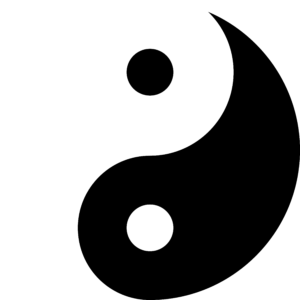
I keep returning to the picture that emerged from everyone’s response to the check-in questions. What do you see when you look inward—at your own thoughts, emotions, energy, and doubts? And what do you see when you look out at the world around you? The picture that took shape was full of seeming opposites—polarity.
Take one part of that picture. On one hand, there was a sense of insanity—a world where human lives were devalued, where pain and hatred were normalised, where empathy seemed absent. On the other hand, there was a recognition of the need and opportunity for dialogue, peace, and justice—a potential to act.
This polarity is central to peacework and dialogue: do we act and speak out, or do we create space for a more meaningful expression of conflicting views? This question is relevant at every level. At the macro level, peace organisations must develop strategies to meet rising populism and even fascism. At the meso level, we must decide how to structure interventions. And at the micro level, we wrestle with our own personal decisions—when to act, when to listen, when to create space for dialogue.
Polarity and polarisation are not the same. Polarity is everywhere—day and night, summer and winter, for and against. It is, as the Tao Te Ching expresses it, the Yin and Yang that give birth to ten thousand things. And as in the Taoist symbol, there is always Yin inside the Yang and Yang inside the Yin. A magnet has two poles—not separate entities, but aspects of a unified field. Their difference allows energy to flow.
Polarisation, by contrast, arises when the fluidity between poles disappears. The relationship between them is no longer dynamic. It’s as if they become frozen in place. In society, this kind of polarisation results in rigid, fixed positions—entrenched oppositions that no longer interact. David Bohm speaks of “blocks in thought,” where fixed assumptions prevent us from perceiving new possibilities.
In dialogue, the idea of polarity as a source of energy and change is crucial. As long as there is movement, the energy generated can be constructive. When the flow between poles ceases, tension builds. This tension can generate heat—fueling destructive conflict—or solidify into a frozen conflict where communication (flow) stops altogether. Both are unproductive.
Returning to the polarity we started with—between dialogue (peace-making and peace-building) and activism (active opposition)—it often feels like a mutually exclusive choice. We feel we must commit to one or the other. But what happens if we create flow between these opposites? What emerges when there is movement between active resistance to injustice and the “neutral” stance of a dialogue practitioner?
I think this is an important question to reflect on. One example of this kind of “dance” between opposites comes to mind. A truly constructive conversation—a dialogue—requires listening with empathy, presence, and non-judgment. At the same time, it requires two sides to avoid becoming a one-sided monologue. This means I must step out of my “listening bubble” and express my own views. The moment I do so, I take a stance—I represent a position. In that moment, I am no longer neutral. The quality of non-judgment is replaced by advocacy.
If both sides in a conversation continually move between listening and expressing their views, something dynamic emerges. The conversation becomes truly alive.
If you have any reflections on this, or if any examples come to mind, please share them in the comment section.
Don't hesitate to contact me
I meant it when I said that you could contact me any time. Here is my email address: bernard.leroux@dialogues.se
 Reflections
Reflections
0 Comments